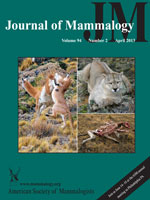The capture and handling of free-ranging animals is an important tool for wildlife research, conservation, and management. However, live capture may expose individual animals to risk of injury, impairment, or mortality. The polar bear (Ursus maritimus) is a species of conservation concern throughout its range and physical mark–recapture techniques have formed the basis of polar bear research and harvest management for decades. We examined movement patterns of polar bears postcapture to measure their recovery from chemical immobilization and determine whether captured bears experienced prolonged effects that would affect individual fitness. Adult female (n = 61) and juvenile (n = 13) polar bears in 3 Canadian subpopulations were captured during the course of other studies using a combination of tiletamine hydrochloride and zolazepam hydrochloride delivered via remote injection from a helicopter. Bears were fitted with satellite-linked global positioning system collars and we used 3 individual-based metrics to assess their recovery from immobilization: time to move 50 m; time to move 100 m; and time to reach a baseline movement rate threshold (km/day) derived from each individual's movements in a fully recovered state (i.e., 30–60 days postcapture). There were no differences in recovery rate metrics across years, age classes, or between females with cubs of different ages. When compared across subpopulations, only the time to move 50 m differed, being shortest in the southern Beaufort Sea. Bears captured on land during the ice-free period in western Hudson Bay and Foxe Basin were more variable in their response to capture than were those handled on the sea ice of the Beaufort Sea, but in all 3 areas, bears showed gradual increases in movement rates. Movement rates indicative of recovery were often reached 48 h after capture and 51 (69%) of 74 bears appeared to be fully recovered in ≤3 days. Consistent with preliminary work on chemical immobilization of polar bears, there was no relationship between drug dose and rate of recovery. Our results indicated that polar bears captured in different locations, seasons, and life-history stages recovered predictably from chemical immobilization in a time frame that is unlikely to affect individual fitness.
How to translate text using browser tools
1 April 2013
Effects of chemical immobilization on the movement rates of free-ranging polar bears
Gregory W. Thiemann,
Andrew E. Derocher,
Seth G. Cherry,
Nicholas J. Lunn,
Elizabeth Peacock,
Vicki Sahanatien
ACCESS THE FULL ARTICLE

Journal of Mammalogy
Vol. 94 • No. 2
April 2013
Vol. 94 • No. 2
April 2013
Anesthesia
Canadian Arctic
capture effects
polar bears
remote drug delivery
satellite telemetry
Telazol




